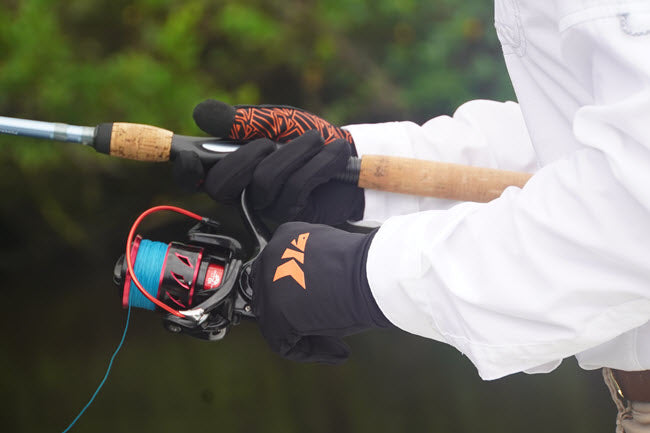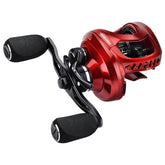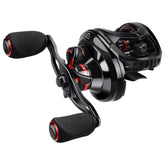
How to Restring a Fishing Reel
Having a strong healthy fishing line on your fishing reel is essential in having a productive outing on the water. If you have old or bad fishing line spooled on your reel there are endless possibilities for things to go wrong. The same goes if you do not restring the fishing line correctly. Even with the best fishing line out there, a proper set up and restringing technique is vital.
How To Know If A Line Needs Replace
Fishing line that is old or damaged must be replaced but sometimes it is difficult to tell if the line you are using has fully run its course. Old fishing line can be a bit harder to determine since from the naked eye it might look fine. Two ways to tell if the line is old is if the color is faded or the elasticity compromised in the case of monofilament line or other plastic fishing lines. New, fresh line should be shiny and clear (or whatever color is noted on the spool). If it begins to fade yellow or takes on a cloudy appearance, your line is old and should be replaced. Exposure to UV light, sunlight, fades line. As for testing the elasticity, simply cast a smaller or lighter lure and check to see if your fishing line has formed loops or when it is sitting on the water. If the line is not straight, its elasticity is gone and should be replaced as well. Damaged line can be a bit easier to detect than old line. Two easy ways to spot damaged line is to pull off 15-20 feet and rub your fingers down the fishing line and if it feels frayed or kinked, the line is damaged and needs to be replaced. Another good way to test the line for damage is to pull off 10 or so feet and simply pull it. If it breaks with ease, replace the line. Continue testing the pull test for at least 20 feet. Again, sometimes a visual check of your fishing line is all you need to do.
How To Restring A Fishing Reel
There are three important components to restringing a fishing reel: tying a sufficient knot, making sure the line is coming off the spool correctly, and keeping the correct amount of tension on the spool.
Step 1: Pull the end of the fishing line off the TOP of the spool and run it through the end of your rod making sure you go through every eye on the rod.

Step 2: For an open face rod, make sure to pass the line through the spool guide and wrap it around the spool. Make sure the spool is able to spin freely as if you are about to cast. For a spinning reel, open the bail before attaching to the spool.
Step 3: Tie a slip knot to attach the end of the line to the spool, cutting off the access tag end if necessary. A slip knot is low profile and strong enough to hold the line to the reel.

Step 4: Spool the line on the reel. When doing this make sure that the line is coming off the top of the line spool or it will become twisted when you are fishing. Create enough tension on the line spool so that the line goes on with ease but is not loose. Imagine you are reeling in a 1oz lure. This should be enough tension to ensure a correctly spooled lure.

Step 5: Cut the line from the line spool leaving a rod's length of excess for either tying on a lure or tying it straight to the hook keeper.

Image source: wikihow
Tips For Restringing A Fishing Reel
There are a couple of well-known tips that will make the restringing process easier and more effective. The more you restring line on your reel, you will come up with your own tips and tricks to make the process go more smoothly as well.
Tip 1: If you do not have a spool vice specifically for restring reels, have another person hold the line spool. With a pencil or screwdriver inserted into the spool, the other person can provide efficient tension on their end by using their hand.
Tip 2: Make sure the line is wet when restringing it on your reel. All you need to do is simply get a bowl of room temperature water and soak the line spool in it before it is even opened. It will go on smoother and decrease the risk of twisting.
Tip 3: If you have enough space, create distance between the end of the rod and the line spool to create a slight flex in the rod when restringing the line onto the reel. This will simulate reeling in the lure and will minimize adjusting once you begin fishing.
Tip 4: A good way to save the line is to use the old line as backing on the reel. A simple blood knot can connect the backing to the new line without hindrance. It is important however that you make sure that you have enough new line that you can make a far cast and still not feel the knot on the reel. While a blood knot is very strong and low profile, you do not want the knot interfering with your casting ability.
Tip 5: Once the line is respooled, and you are finally fishing, make your first few casts long and reel it in quickly. This is important because it can create the perfect amount of tension on the fishing line. Which in turn will minimize back lashing and twisting later on.
Storing Fishing Line Long Term
Storing fishing line long term is as simple as keeping it cool and dry. A great place for tis is in the freezer or a refrigerator. If stored correctly, fishing line can last up to 5 years in the refrigerator before losing elasticity. Keeping line out of direct light is also highly important. Neither monofilament or fluorocarbon do well when exposed to light. Direct sunlight will break down the chemical components within the line and decrease its lifespan drastically. Braid line is much more resistant to natural conditions and can be stored in either the boat or garage out of direct light.












